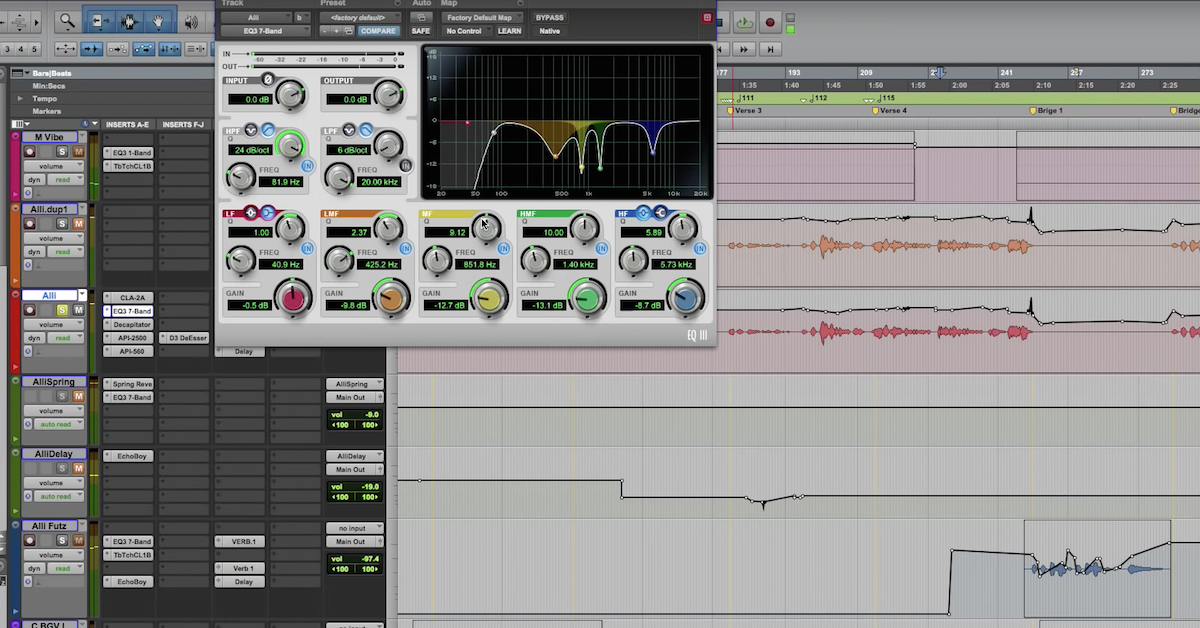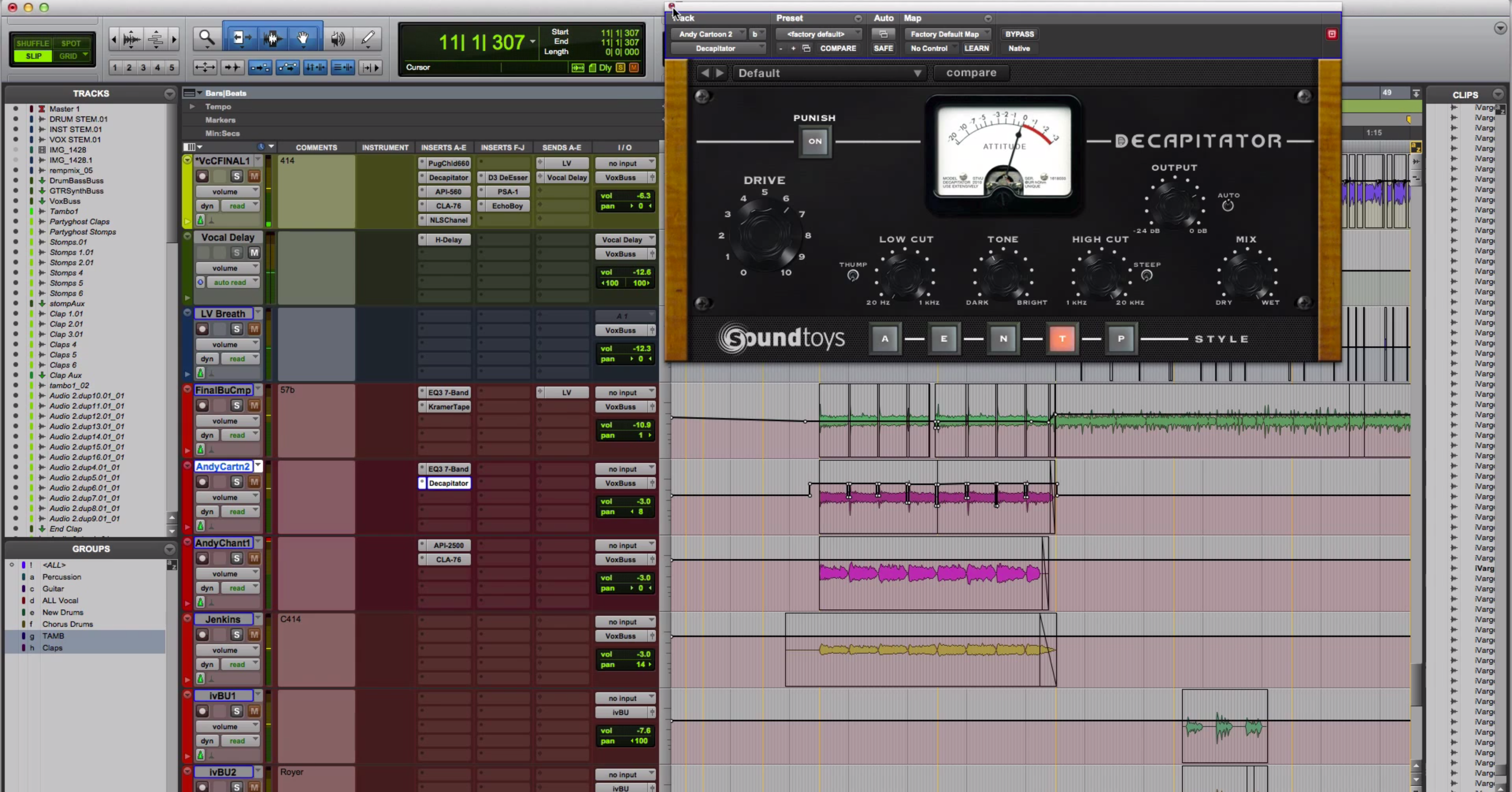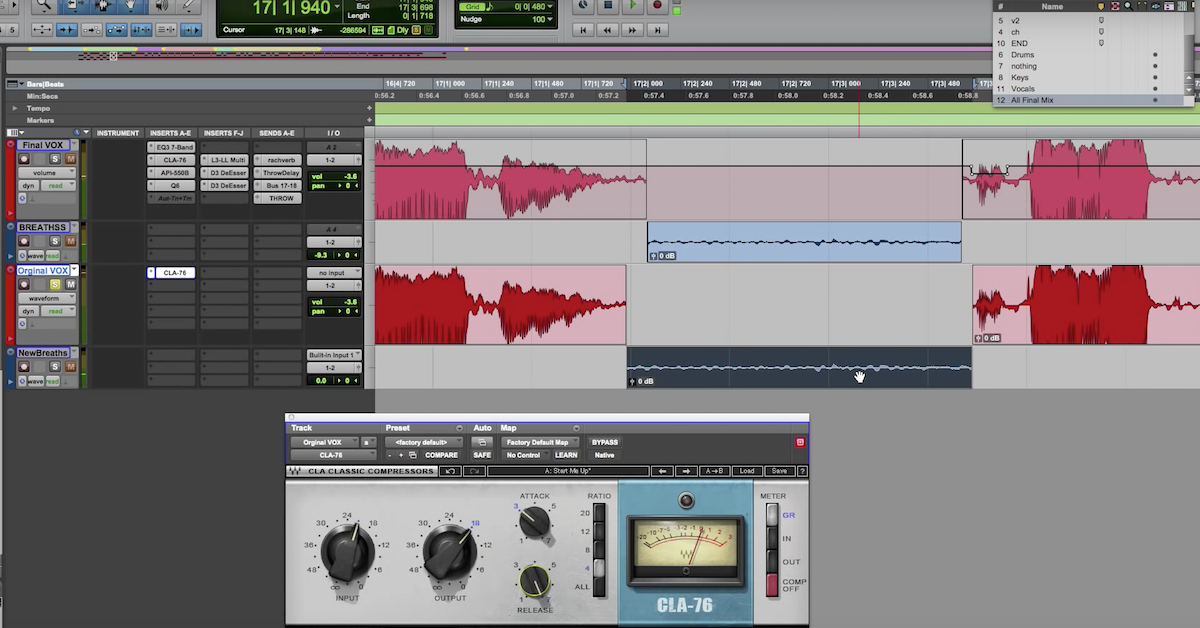How to Mix Vocal Stacks
The idea for this song was that it was supposed to sound like the band Talking Heads. Not sure if you’ve listened to them. You definitely should, they’re a great band from the 70’s and 80’s. David Byrne is still doing really great stuff. And so the song was supposed to sound sort of like an african tribal infused pop song with a melody that was driving the song. So we’ve got a lead vocal track right here and six more backing tracks, all happening at the same time throughout most of the song. So that can present a challenge. Let’s take a listen to it. This is close to the final mix.
[music]
Let’s solo the vocals. It’s a nice harmony. It ranges from a deep lead vocal to a falsetto high vocal. It was recorded with an AKG C-414. Before I put plugins on I like to take all the breaths in the lead vocal and drag them to their own track. I do this because I don’t want breaths to be triggering compression and EQ. And after that, I bring down sibilant noises. So all S’s C-H sounds I bring down with volume automation.
My signal chain here, while we’re talking about plugins, is pretty intense and same with my reverb and delays. I’ve got 1 2 3 4 5 6 7 different instances of processing here. And we’ll go through that. So the first thing I did on the lead vocals — let’s take a listen to it raw, ok.
[lead vocals raw]
The vocals were uncompressed and not cutting through the mix. First I boosted a good amount of high end with the API 560 equalizer. Some 16k, 8k, 4, 2k, I cut some mids and lows. Then used the Waves Puigchild to handle peaks.
[lead vocal + Puigchild compressor]
When he gets a bit loud the PuigChild engages. Then I’ve got Decapitator. I was going through a SoundToys Decapitator phase. Pretty liberal with the distortion.
[vocal + SoundToys Decapitator]
It brightened the vocal, added a bit of harmonic distortion to help the vocal cut through and sit in it’s own space. Then the API 2500 compressor which is a great compressor.
[vocals + Waves API 2500 Compressor]
Most of the peaks and content is being compressed with a slow release time and moderate ratio: 4 to 1 — pretty slow attack time. Mess around with this compressor. The threshold and knee and detector all add different sonic characteristics. After that, because I have so much processing going on, definitely need de-essing. Just a range of less than 1 dB. Then a little more compression: Waves CLA-3A.
[vocal + Waves CLA-3A Compressor]
Boosted the vocals and smoothed it and rounded it out. A lot of distortion and high end going into it so it really helped. Then a PuigTec — boosting 3 dB at 60 Hz and 4 dB at 16. Also attenuating a bit. This is a unique EQ.
Let’s go through sends. We’ve got lead verb, lead verb b, lead delay, slap lead, lead 4th, throw delay, and then lead slap. The first thing I have is the IR1 efficient. Some sort of plate.
[vocals + IR1 reverb]
That was mixed pretty low. Next a spring reverb. Kind of a guitar amp sound.
Helps the vocal sit in it’s own space. Generally I’m not soloing when adding effects. I’m listening to the entire mix. We’ve got three more instances of EchoBoy.
[lead vocal + SoundToys EchoBoy]
It helped the vocal after all the sculpting with EQ and compression and distortion to sit in it’s own place. Then these backing vocal tracks.
That one sort of mimics the lead vocal. Sounds like I have a good amount of decapitator going on. There’s that high vocal. Where as the lead vocal was coming out the main output, most of my backup vocal tracks were going through what is called BU buss. And on the BU bus I have the PuigChild 670, which is a stereo version of what we saw before. API equalizer boosting some high end. And a de-esser doing a good amount of de-essing. Let’s listen to the lead vocal with backup vocal tracks.
[background vocals]
In addition to these going to their own auxiliary track right here, the aux track was being bussed to it’s own auxiliary tracks with spring reverb, more EchoBoy, and in addition these tracks right here were certain combinations of these aux tracks that we saw here. So it got a pretty complex when it came to signal processing as you can see my computer is operating a little bit slow. It’s a pretty taxing session.
[lead vocals + background vocals + music]
Even though you see we have some guitar tracks, more guitar, more guitar, organs, more organs, bass, drums, everything — the lead vocal and the backup vocals working with the lead really dominated the song and were the driving force. That’s why I have a lot of processing, a lot of spacialization happening. Definitely more so than, you know, some of the drums and other things.






